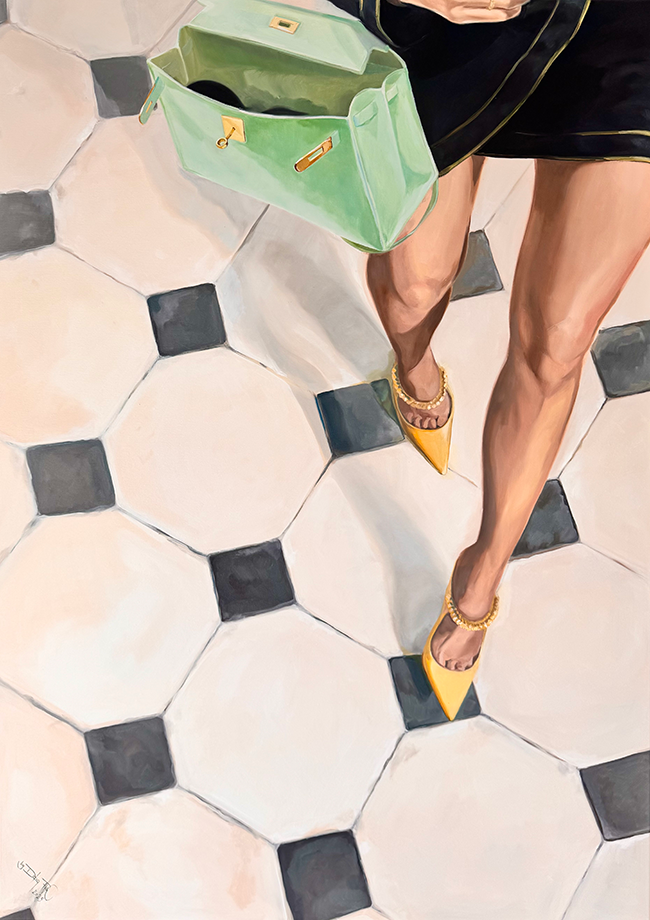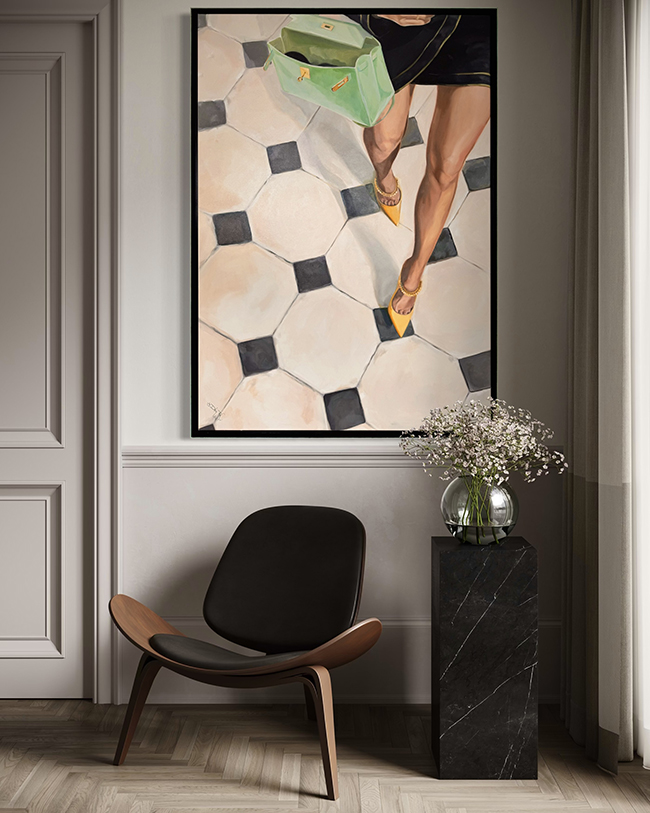Dóra Pál, known as BYDORAPAL, doesn’t just paint pictures—she tells stories. Her work blends classical fashion aesthetics with an intuitive sense of emotion, turning canvas into conversation. Each painting is precise, elegant, and deeply human. She has an eye for beauty, but not the kind that fades. Her portraits capture something quieter: a glance, a stillness, a thread of hope or introspection. This isn’t surface-level art. It goes beneath, beneath, beneath.

There’s something intentional in the way she works. Every hue, every detail, is placed with care. Dóra doesn’t just want her viewers to look—she wants them to pause. She paints not just what we see, but what we feel when we’re not trying to put words to it. Her world is one of grace, composure, and emotional clarity.
Cinema on Canvas
In her latest series, Dóra Pál steps into the world of film—not to mimic it, but to expand it. These are not copies or recreations. They’re quiet tributes to characters that linger in the cultural imagination. And like much of her work, they’re layered—not just technically, but emotionally.
She chooses moments that aren’t always the most dramatic, but the most telling. A single posture, a look away from the camera, the tilt of a wrist—Dóra finds character in the small things. The oil painting titled “Vivian” features Julia Roberts’ character from Pretty Woman. But instead of high-gloss glamour or iconic movie stills, Dóra captures a quieter moment—Vivian relaxed, reflective, distant. There’s a softness in the gaze, and a quiet confidence in how the figure holds herself.
It’s cinematic, yes. But it’s also distinctly Dóra. That sense of balance. That elegance rooted in calm.

French Elegance, Classical Backbone
There’s a thread of French sensibility running through Dóra Pál’s work. Her brushstrokes don’t chase attention. Her compositions don’t scream. Instead, they float—anchored by structure, but light in mood. Think of a minimalist Parisian apartment: clean lines, soft textures, room to breathe. That’s the feel of her paintings.
Technical Skill with Room for Emotion
Dóra Pál knows how to paint. That much is clear in the way she controls tone, contrast, and composition. But what makes her stand out is how that technical skill never overshadows emotion. It serves it. Her paintings don’t feel rehearsed. They feel lived-in.
In “Vivian,” for instance, the palette is subtle but rich. There’s depth in the shadows, warmth in the skin tones. The texture of fabric is there, but it doesn’t take over. It supports the mood. Her lines are clean, but not cold. There’s tenderness in how she defines the face, the hands, the hair. You get the sense that she’s not just painting a subject—she’s in dialogue with it.
Quiet Strength in Narrative
The strength of Dóra’s film-inspired series lies in what it doesn’t try to do. It doesn’t attempt to replicate cinema. It doesn’t aim to outshine it. Instead, it finds a new path—one where painting becomes a kind of slow cinema. Where emotion plays out not in a sequence of images, but in one carefully held frame.
That’s what her work offers. A slowing down. A reminder that a single image can say just as much as an entire script.
A View into the Artist’s World
Dóra Pál’s paintings might start with a brush and canvas, but they finish in the space between the viewer and the work. She doesn’t over-direct. She leaves room for interpretation, for personal connection. Her portraits don’t dictate—they suggest. They offer something soft, balanced, and deeply human.
Her latest work affirms that she’s not just borrowing from pop culture—she’s reshaping it through her lens of refinement and subtle power. Whether it’s a well-known character like Vivian or a more abstract emotional scene, Dóra brings the same depth of care.
In a world loud with images, her work gives us space to feel again.


